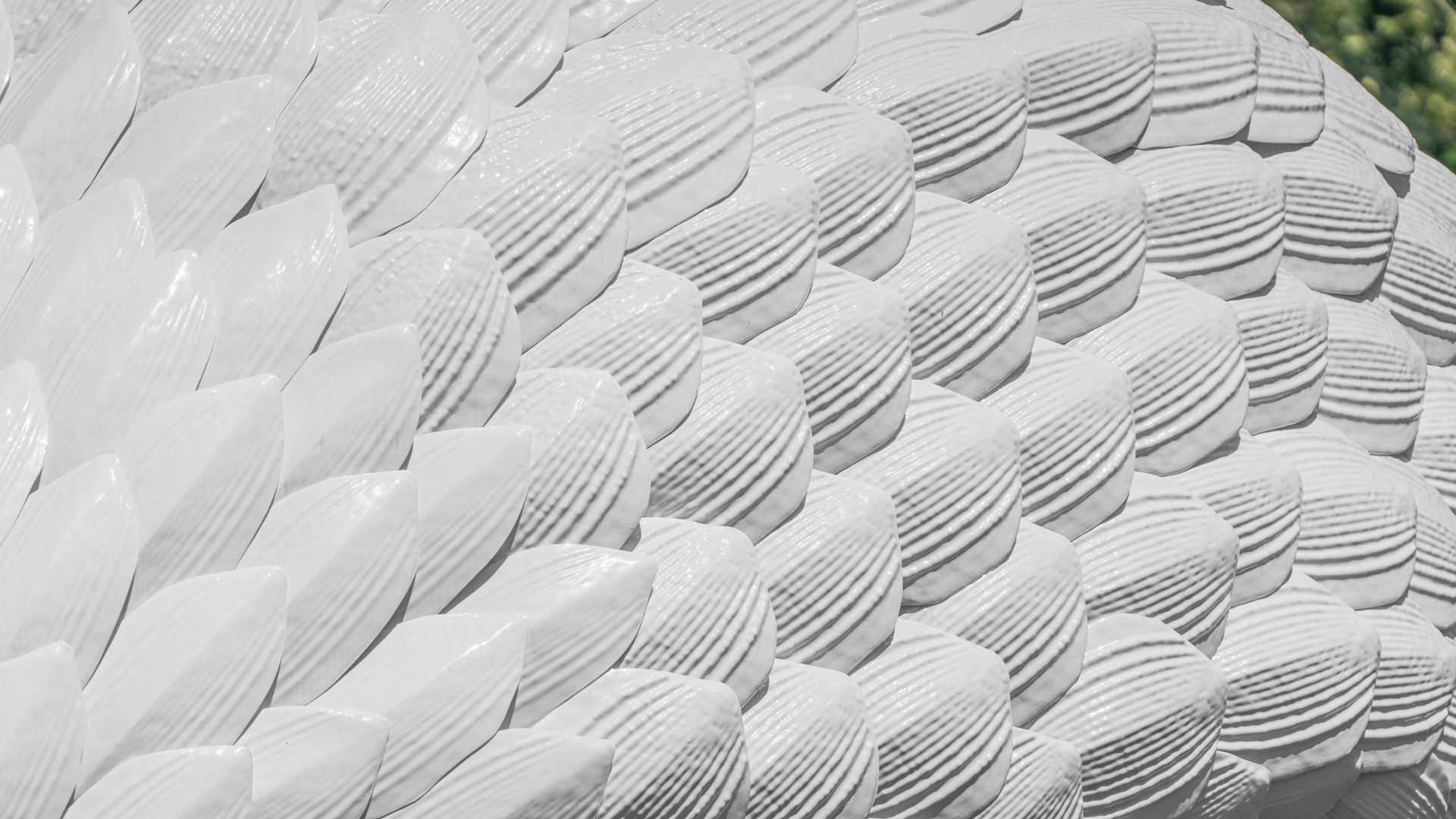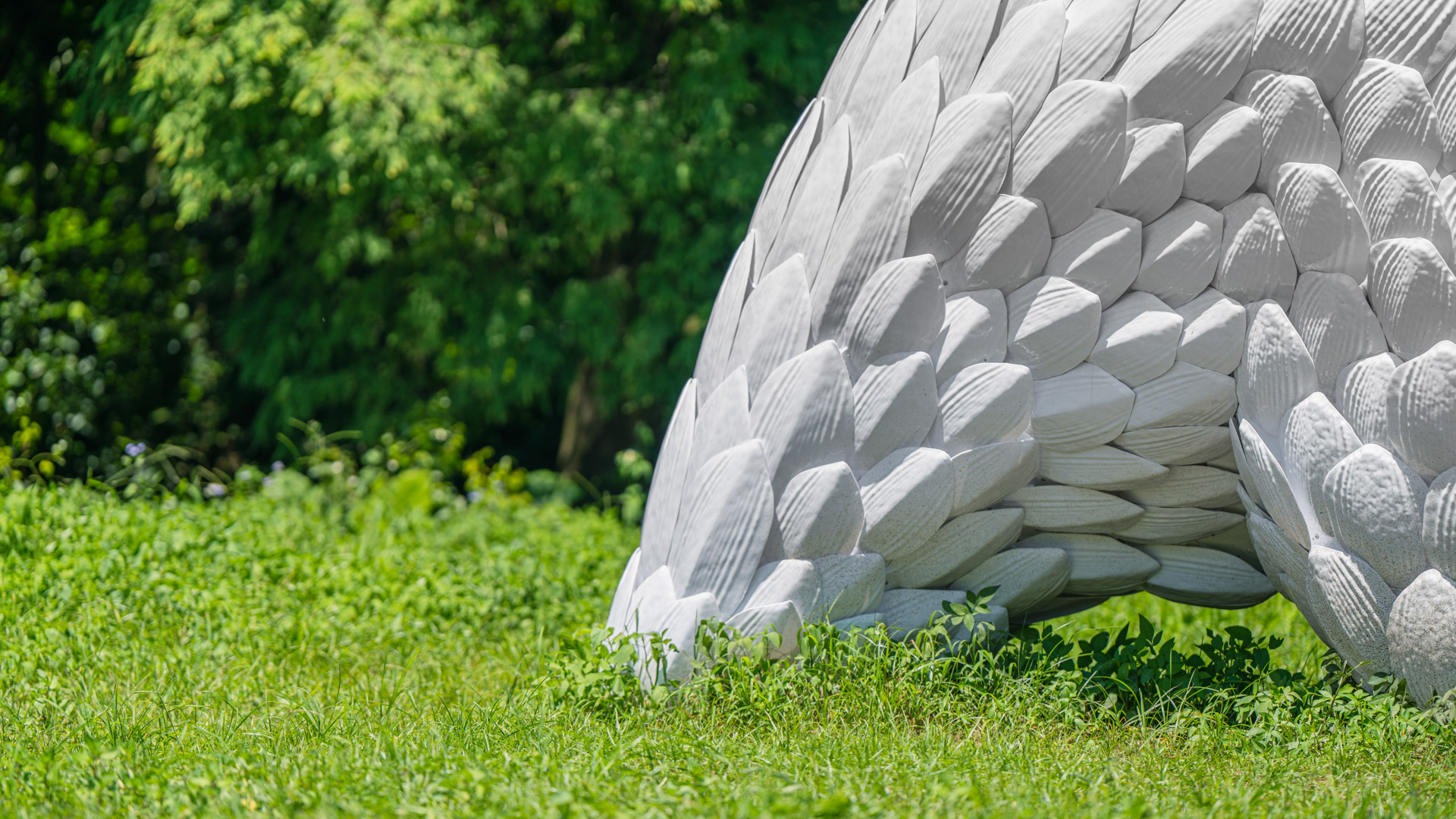Under the theme of "Sleeping 'Ae:em", the artist Chen Hsiangfu created a giant pangolin with white scales lying asleep in the fallow land in Hengshan Mountain, Hsinchu, where wild pangolins are often found. Set against the scenery of larch forests and the Pek Kong (Earth God) Temple, this sculpture is intended to attract the public to linger during the art festival, and raise public awareness to the issue of conservation at the same time.
In Taiwan's mountain myths and superstitions, the pangolin, which is active in the low-elevation mountains, plays multiple roles. In aboriginal stories, the pangolin is characterized as a young man who loves to sleep in his bed. In the Han Chinese version, it’s a golden mythical animal that helps farmers turn over the soil. In the international smuggling market, the superstitious belief that their beautiful scales can invigorate blood circulation, unfortunately, has directly brought a curse to the pangolin community in the past 20 years. From once being a pangolin poaching nation, Taiwan is now becoming an important conservation base due to the rising awareness of pangolin protection.
以「沉睡的少年」為題,藝術家陳湘馥在時常發現野生穿山甲的新竹橫山,創作一隻具有白色鱗片趴臥於休耕地的巨型穿山甲,搭襯落羽松林與伯公廟的景色中,欲吸引藝術季的民眾流連駐足,另一方面也希望喚起公眾對於保育議題的關注。
在臺灣的山林神話與迷信裡,活躍於淺山地區的穿山甲扮演著多重的角色,在原住民故事裡,山裡的穿山甲原型是一位愛賴床的少年。在漢人的版本裡,是幫助農夫翻土的黃金神獸。而國際走私的市場裡,迷信穿山甲鱗片具有活血通經等的藥效則為族群帶來了詛咒,臺灣從穿山甲盜獵王國到如今保育意識抬頭,逐漸成為重要的保育基地。


